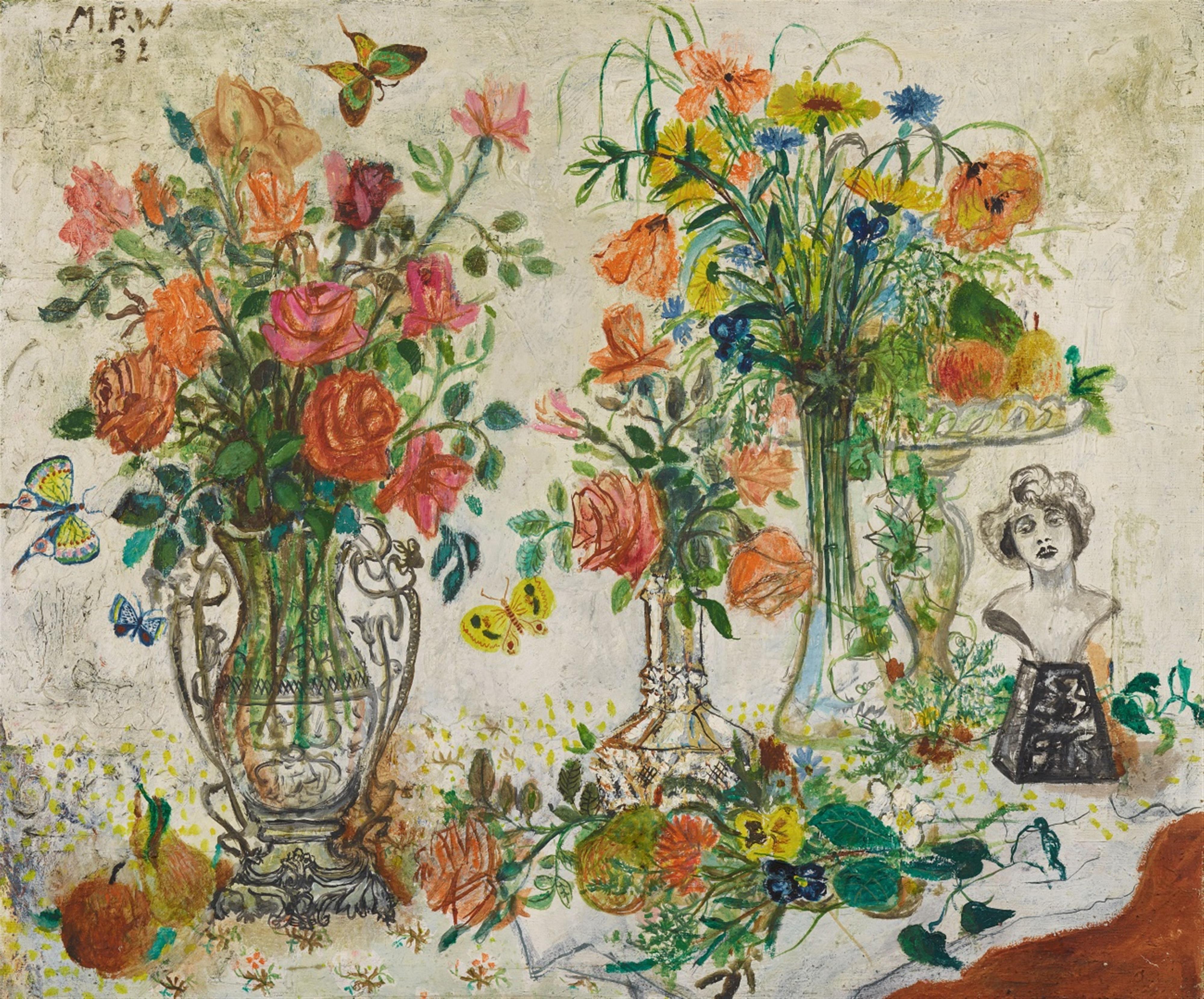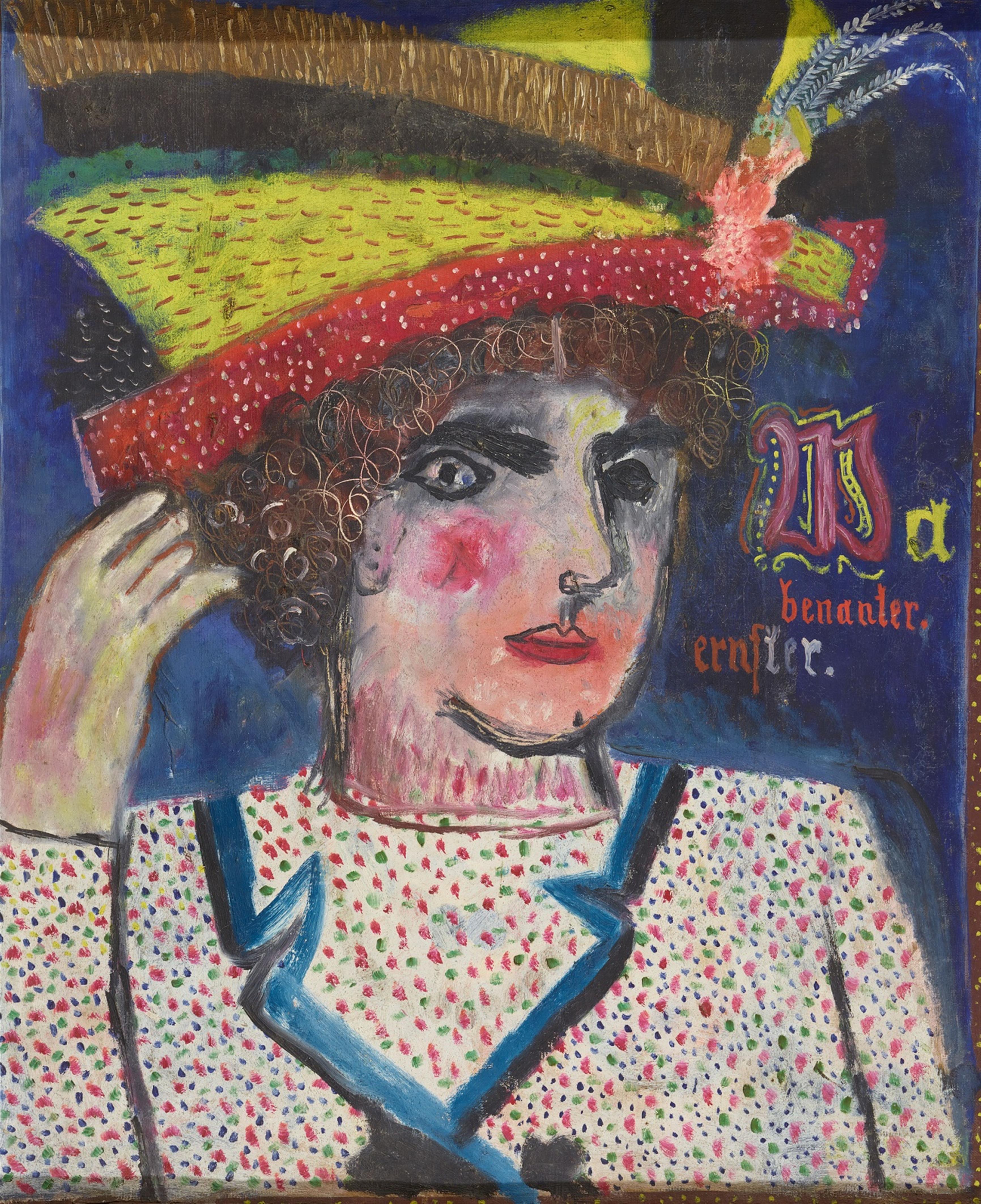Max Peiffer Watenphul
Stilleben mit Rosen. Verso: Frauenbildnis mit Federhut
1932 resp. 1923
Oil on canvas, double-sided 81 x 96 cm Framed. Monogrammed and dated 'M.P.W. 32' in black recto upper left. Titled "Stilleben mit Rosen" verso on stretcher. - Some slight surface soiling.
After studying law, Max Peiffer Watenphul followed the recommendation of Paul Klee and began his education at the Bauhaus in Weimar, which was still new at that time. Very early on, at the beginning of the 1920s, his work was already being sold by Alfred Flechtheim and he was also represented by Johanna “Mother” Ey in Düsseldorf. The Folkwang school of design offered him a position in 1927, and Peiffer Watenphul taught preliminary courses and artistic composition there until 1931. He later won the coveted Rome Prize of the Villa Massimo, and in 1941 he succeeded his Bauhaus teacher Johannes Itten in Krefeld at the college for textile art. Peiffer Watenphul moved to Salzburg while the war was still in progress and then later to Venice and Rome.
He is an exceptional artist whose idiosyncratic hand - or, to be more precise, style of painting - stands out clearly among fellow members of his generation. With his still lifes, particularly his floral still lifes, the artist proved himself to be a refined aesthete whose sense for grouping flowers, vases and containers recalls the variety of Dutch painting, but in no way sought to imitate it. The air of morbidity and the iconographically implied transience are depicted with a lyrical expressiveness filled with melancholy. Peiffer Watenphul plays with the forms and decorative variety of glass vases and, to accompany them, he has selected loosely bound bouquets done in delicate pastel tones and featuring roses, poppies and other summer flowers. With the seemingly random arrangement of objects, he opened up a new pictorial space for his idea of reality.
The reverse side of the still life is surprising: it is labelled “Wa benanter. ernster.” and features the portrait of a woman with a stack of hats piled on her head, her face done up in expressive make-up and the cloth of her jacket painted with a striking pattern and cut. Peiffer Watenphul was able to draw a lot of charm out of the “portrait” theme assigned to students at the Bauhaus. His model displays her enjoyment of a bold presentation with abundant materials and visibly strikes a chord with the artist. She is his fellow student Grete Willers (1883-1977). He devoted extensive attention to her in numerous watercolours and drawings, but also in the occasional painting, as in the one here. The paths of Peiffer Watenphul and Willers met not just in the Weimar period; years later, in 1927, Grete Willers would also be given a position in the department of embroidery and weaving at the Folkwang school of design in Essen.
Catalogue Raisonné
Watenphul Pasqualucci/Pasqualucci G 198
Provenance
Galerie Otto Stangl, Munich (1966); Karl & Faber, Munich, Kunst Alter und Neuer Meister, 5 Dec. 1995, lot 732; Private collection, North Rhine-Westphalia
Exhibitions
Herford 1960 (Städtisches Museum), Max Peiffer Watenphul, no. 15




